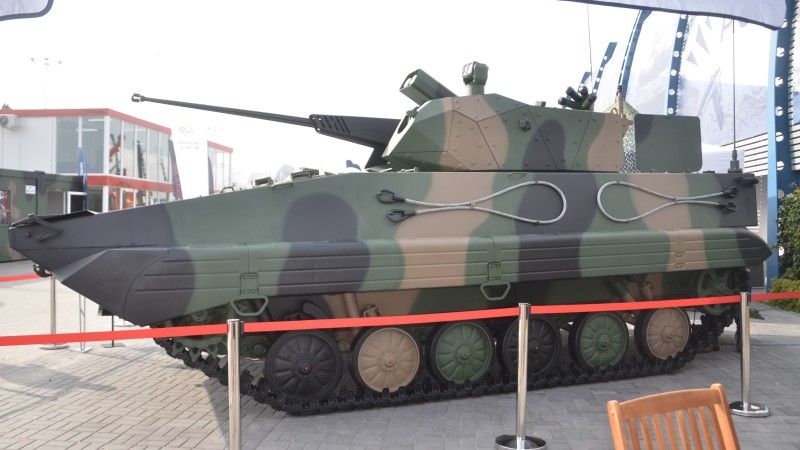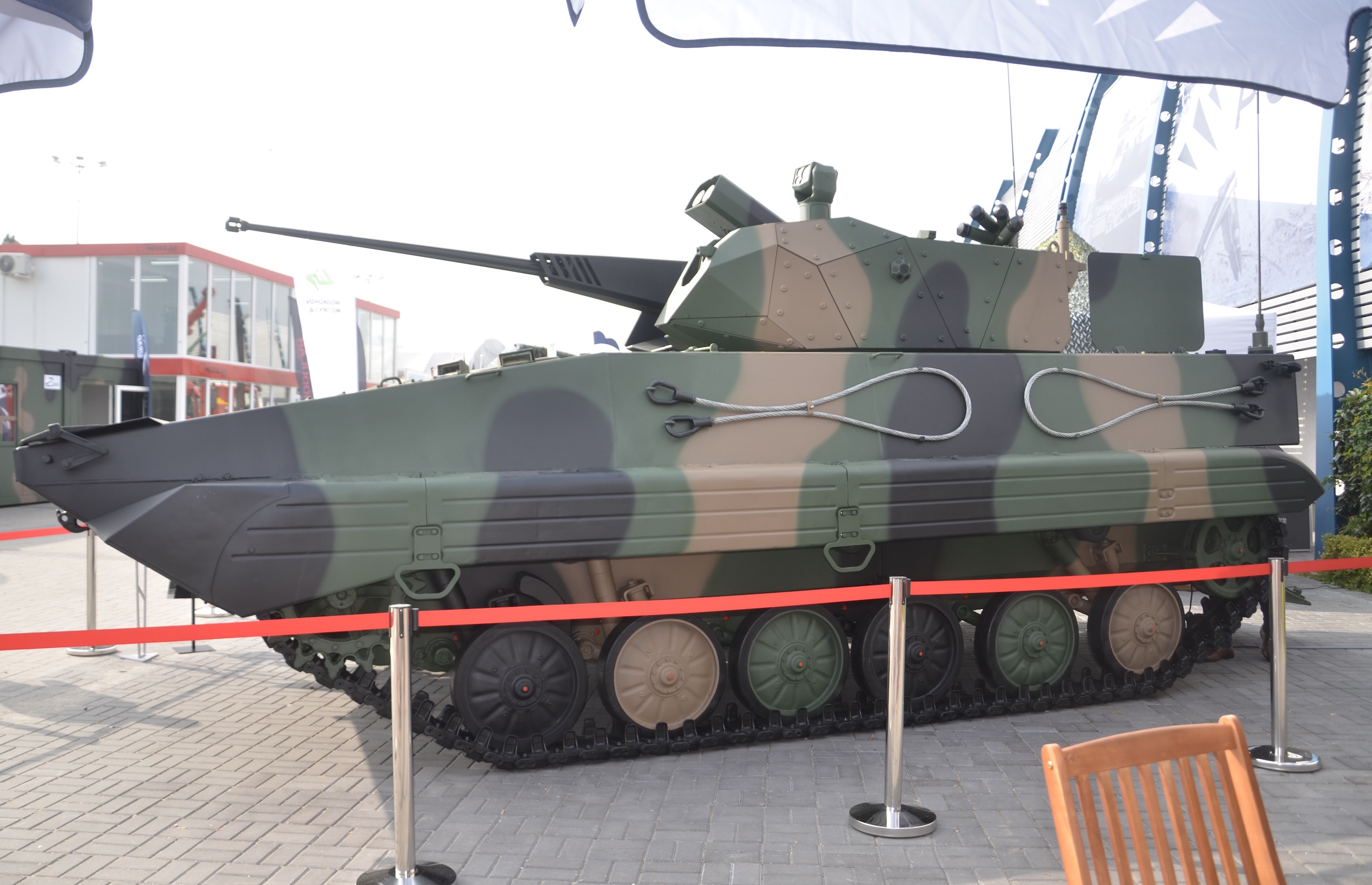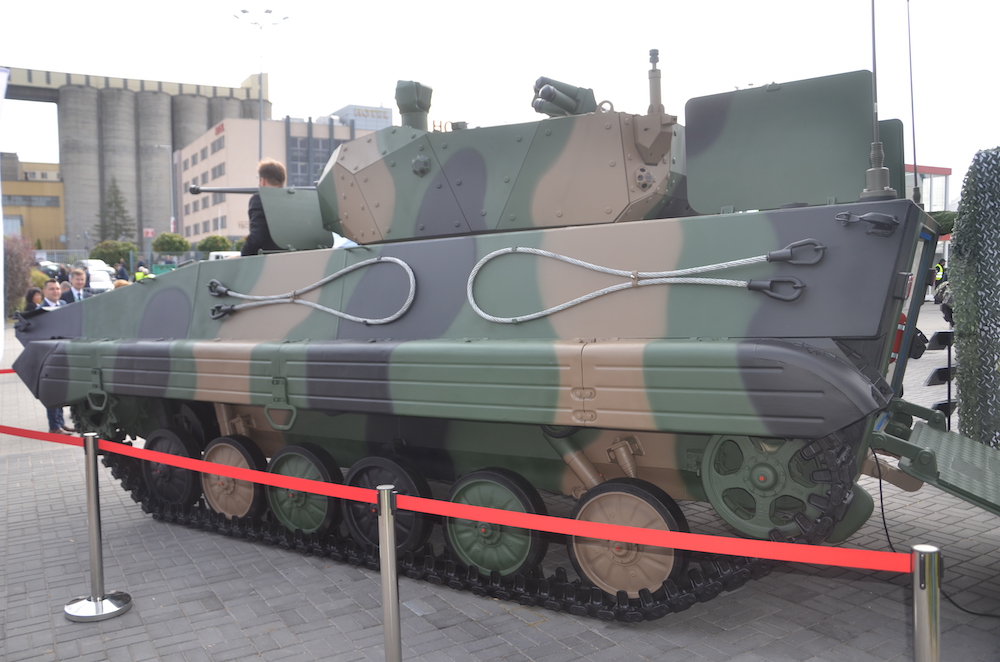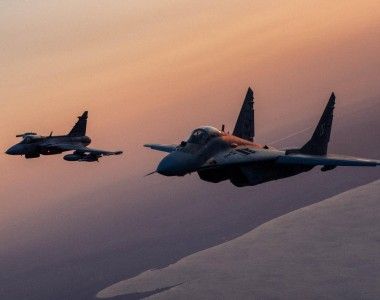MSPO 2021: Modernized BWP-1 Prototype Unveiled

WZM S.A. has unveiled its proposal for the upgrade of the BWP-1 IFV, designed both for the Polish military, as well as for potential export customers. It is a functional prototype that was also used to test the prior assumptions for the upgrade. It features a new turret, with a 30 mm gun.
Currently, the Armament Inspectorate of the Polish Ministry of Defence is engaged in a technical dialogue, regarding the modernization of a mechanized battalion element (referred to as the "module") that would be equipped with the BWP-1 vehicle. WZM S.A. [Military Automotive Works] company based in Poznan, belonging to the PGZ Group, is one of the parties engaged in that dialogue. WZM S.A. is also the sole entity that remains capable of carrying out a comprehensive modernization and integration of the necessary new systems, and components. The company, for years now, has been specializing in work tied to support for operational use of the BWP-1 (BMP-1) family vehicles. In the past, several variants for these upgrades have been developed. These include the BWP-1M Puma vehicle. Ultimately, however, the upgrade was not implemented, despite the WZM's readiness to implement it at a large scale.
For some time now, the Polish Ministry of Defence and the Armed Forces have yet again expressed their interest in a potential upgrade of the BWP. Two years ago, during the MSPO event, two demonstrators (tank destroyer, and modernized BWP-1 IFV platform) were showcased, as a response to the aforesaid requirement. In parallel to the technical dialogue, the Poznan facility, as well as the collaborating entities, were all working on creating a functional prototype of modernized BWP IFV. The results can be appreciated in Kielce. The assumptions presented based on a demonstrator showcased two years ago have been verified and implemented.
One also needs to add that WZM is currently working on overhauls and upgrades of the BWR-1S/1D platform, with all of the mission equipment being replaced. The first five vehicles have already been delivered - between 2017 and 2019. Work concerning another 18 examples has been contracted, with the delivery deadline set in 2023. The agreement was signed earlier this year - in May. The BWP modernization, however, covers a much broader scope, including the change of structural design and implementation of entirely new weapons systems.

The vehicle showcased in Kielce has had its hull redesigned, to a great extent. Thanks to the fact that the roof of the hull is higher (and side sections have been made higher), and thanks to the changed position of the fuel tank (moved towards the engine compartment), and rearrangement of the interior (removal of the turret loading mechanism and the turret base), the interior is far more ergonomic, and the crew comfort levels have been improved as well. The space savings may be used to make the troop/combat compartments more spacious, or they also may be used to accommodate extra systems. The modernized vehicle also exhibits STANAG 4569A Level 3 protection levels (with possible enhancement to level 4). IED/mine protection is compliant with Level 1 requirements of the STANAG 4569B norm.
The vehicle is operated by a crew of 2 or 3, along with six troops in the back. The driver has a new instrument panel at his disposal, while situational awareness has been enhanced, thanks to new optoelectronics on top of the turret, and a 360 Degrees Observation System. Th upgrade also includes a new internal and external communications suite, an A/C system/heating system, integrated with the air filtering/ventilation system, as well as a system for detection of contamination. SSP-1 Obra 3 laser warning receiver, new fire prevention system, and new seats, have all also been installed on the new IFV. The vehicle showcased in Kielce comes in the "extended" variant, also including the optional integration of a new power-pack - with a 326 HP MTU 6R 106 TD21 engine (identical to the one in the Jelcz 442.32 truck), and with reinforcement of the drivetrain. Some elements of the extra equipment are also considered to be optional, including the A/C/heating system. Nonetheless, these were integrated into the prototype, to demonstrate how these can be used to make operational use of the platform more comfortable for the crew.
The most evident change, in comparison to the platform that had been presented two years ago, pertains to the changed turret system. The above refers to the latest unmanned Belgian John Cockerill company offering - an unmanned variant of the Cockerill 1030 system. It is showcased as a possible solution that can be used on the modernized BWP platform. Thanks to the fact that previous experiences have been used, the process of developing the unmanned solution could have been accelerated. The main objective adopted by the engineers was to create a relatively light turret that could be integrated onto a variety of wheeled and tracked combat vehicles, including platforms of limited payload. At the same time, the turret still features a powerful 30, or 40 mm gun. WZM S.A., depending on the ultimate requirements and expectations defined by the Ordering Party, remains ready to implement a turret that would meet all of the requirements.
The turret in question, however, offers Level 2 protection in line with the STANAG 4569 norm. Nonetheless, the armour may be improved to meet the Level 4 requirements - thanks to extra modules. In the basic variant the turret, armament included, weighs less than 1,500 kilograms. It is also a compact design. This allows for retaining the original platform's amphibious capability. The turret presented in Kielce is armed with the 30 mm Bushmaster Mk 44S gun, similar to the one used in the case of the Polish ZSSW-30 unmanned turret system, with an option of changing the caliber to 40 mm, and capable of using ABM rounds. The main gun is coupled with a coaxial 7.62 mm machine gun and an optionally integrated ATGM launcher. The turret also features eight smoke grenade dispensers (in the rear), an optoelectronic sensor for the commander (on the top), and the gunner's sight). The turret module features a modern fire control system as well.

The prototype presented in Kielce has undergone numerous tests that had to comprehensively prove the efficiency of the adopted solutions, and test the integration. Noteworthy, in this configuration, the BWP-1 vehicle would still retain its amphibious capability - meeting one of the primary requirements set by the military. The configuration may be further modified, depending on the requirements of the Ordering Party.
If the WZM S.A.'s proposal is selected, with the company acting as the primary contractor in the BWP-1 upgrade, the entity claims that it would work closely with other Polish defence sector companies. For now, companies of the PGZ Group listed below are to take part in the programme: PIT-RADWAR S.A., WCBKT S.A., HSW S.A., ZM Tarnów S.A., PCO S.A. and Dezamet S.A.
When it comes to the foreign partners who would supply the key components of the upgrade, it is planned that a transfer of technology would take place, once the final shape of the upgrade is ultimately defined. The designers from Poznan have also started cooperation within the scope of R&D regarding this upgrade, with the Military Institute of Armoured and Automotive Technology (WITPiS), and the Military University of Technology (WAT).
At the moment, the NPBWP Borsuk programme, aimed at the development of the target BWP-1 replacement, is in progress. The vehicle in question has been developed by HSW S.A., in collaboration with the PGZ Group companies, including WZM S.A.. WZM has developed the power-pack for the Borsuk IFV. However, the introduction of the Borsuk platform into service would be a long-running, time-consuming process, as several mechanized battalions are expected to receive the new IFV. This refers to the existing units, but also the elements of the newly formed 18th Mechanized Division. Thus, the BWP-1 upgrade shall be viewed as a necessary gap-filler, pursued alongside, not instead of the Borsuk programme.
Considering that more than 1,000 Borsuk IFVs would be needed (specialist variants included), the new platform would be fully fielded, most certainly, after 2030. This is why it is necessary to tailor some of the BWP-1 platforms to the requirements of modern combat, especially in the firepower, mobility, or situational awareness departments. The upgrade package showcased by the Poznan-based WZM company meets these requirements, while implementation of a modernization programme may accelerate the process of reinforcing the combat potential of the armoured and mechanized elements, also significantly improving the crew-safety and ergonomics. The programme also envisages a high degree of involvement on the part of the Polish industry. The WZM company is also still ready to offer specialist variants based on the upgraded BWP-1 platform, including the Ottokar-Brzoza tank destroyer.
Article prepared in collaboration with WZM S.A.



